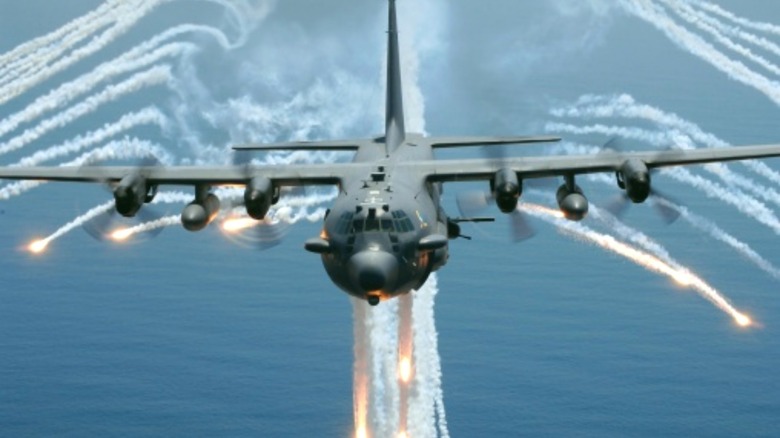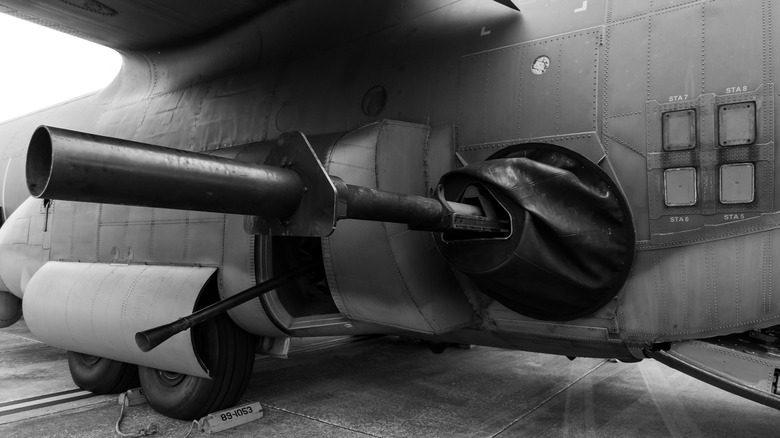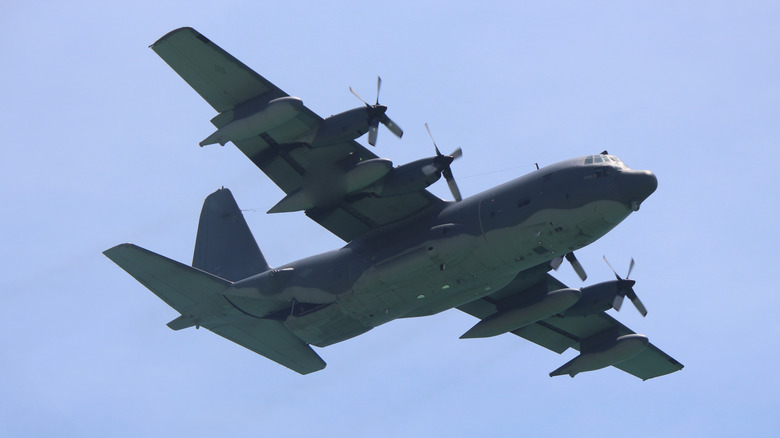The Biggest Strengths And Weaknesses Of The Legendary AC-130
The U.S. military operates many military transport aircraft, but one of the most impressive is the C-130 Hercules, which entered active service in 1954. The aircraft can transport everything from troops and equipment to vehicles and supplies. It's a workhorse heavily utilized decades after entering the inventory but has more uses than mere transportation. In 1967, someone had the bright idea to turn the Hercules into a gunship.
That's not to say they strapped a machine gun to the roof and stamped it ready for combat — the AC-130 is a highly advanced ground-attack aircraft that can carry and deliver some seriously heavy ordnance. AC-130s are primarily used for close air support, armed reconnaissance, and air interdiction, and they've played a part in every major U.S. military operation since the Vietnam War.
Unlike most combat aircraft, the AC-130's weapons systems are side-mounted, requiring the aircraft to face its targets from one side of the plane. This makes it possible for the AC-130 to fire on a target while loitering, though this brings some disadvantages during more intense combat operations. For the most part, the AC-130 is a beast capable of raining ammo on targets to significant effect, though, like any combat aircraft, it has several weaknesses alongside its strengths.
The AC-130 packs a serious punch
This aircraft has some of the deadliest firepower ever strapped to the side of an aircraft, and it packs a punch. There have been many variations, and each is operated to fulfill specific combat functions. Throughout the Vietnam War, AC-130s took out over 10,000 trucks. The early iterations were retired from service to make way for the modern AC-130, which utilizes many of the features of its predecessors with enhanced weapons systems and equipment. The AC-130J Ghostrider entered service in July 2019, with 37 in inventory by 2024.
The AC-130J Ghostrider has a precision strike package with multiple armaments. They feature 30mm and 105mm cannons, which can fire directly onto a target. The aircraft also hosts various standoff precision-guided munitions, including the GBU-30 Small Diameter Bomb, the GBU-69 Small Glide Munition, the AGM-176 Griffin missile, and the AGM-114 Hellfire missile, all of which ensure the Ghostrider can strike targets of all kinds.
The aircraft's 105mm gun is a howitzer-sized weapon usually mounted on light tanks, so it's more than capable of destroying armor on the battlefield. However, the U.S. Air Force is considering removing these from future versions of the gunship as future campaigns may not need them.
The AC-130 has several weaknesses
First and foremost, the C-130 isn't the most maneuverable aircraft and became even less so when converted into a gunship. Poor maneuverability makes the AC-130 susceptible to fighters and antiaircraft ground fire. Additionally, the port-mounted weapons systems limit the aircraft's orientation when aiming at targets.
These limitations ensure the AC-130 is operated almost always at night, as it's less vulnerable under the cover of darkness. Another issue is the space within the aircraft, as the weapons and ammunition take up most of the volume inside the unpressurized cabin. This makes operation difficult and, in some cases, dangerous. The crew is another concern, as the AC-130 requires two pilots, one weapon system operator, a combat systems officer, a sensor operator, and four special mission aviators.
Ultimately, the AC-130's biggest weakness is its large size and slow speed, which make it an easy target for anyone on the ground. Overcoming this requires accurate and timely intelligence to ensure the battlespace is as safe as possible for the aircraft's operation. While the U.S. lost several AC-130s over the years to enemy fire, the vast majority survived thanks to these tactical planning measures.


